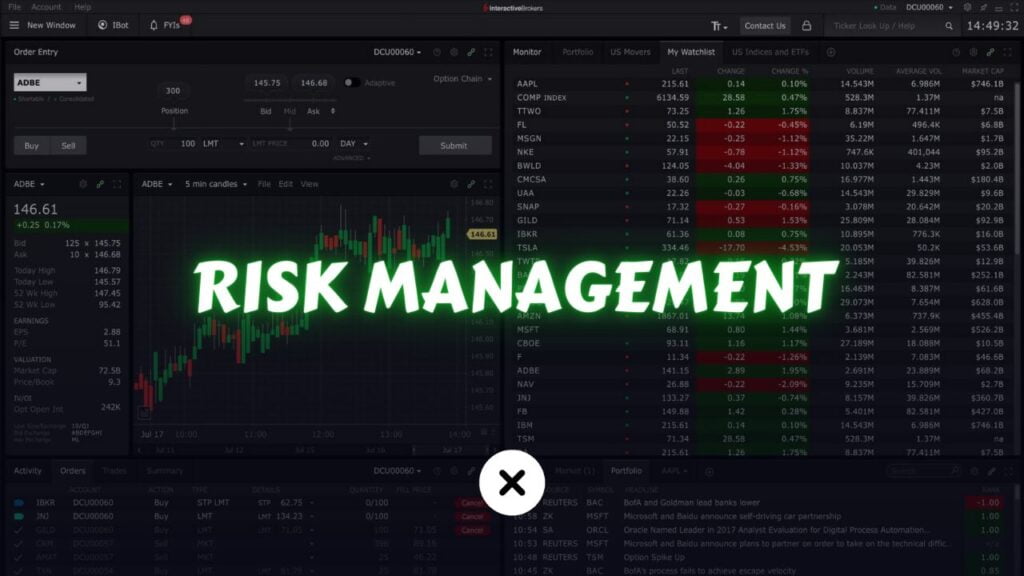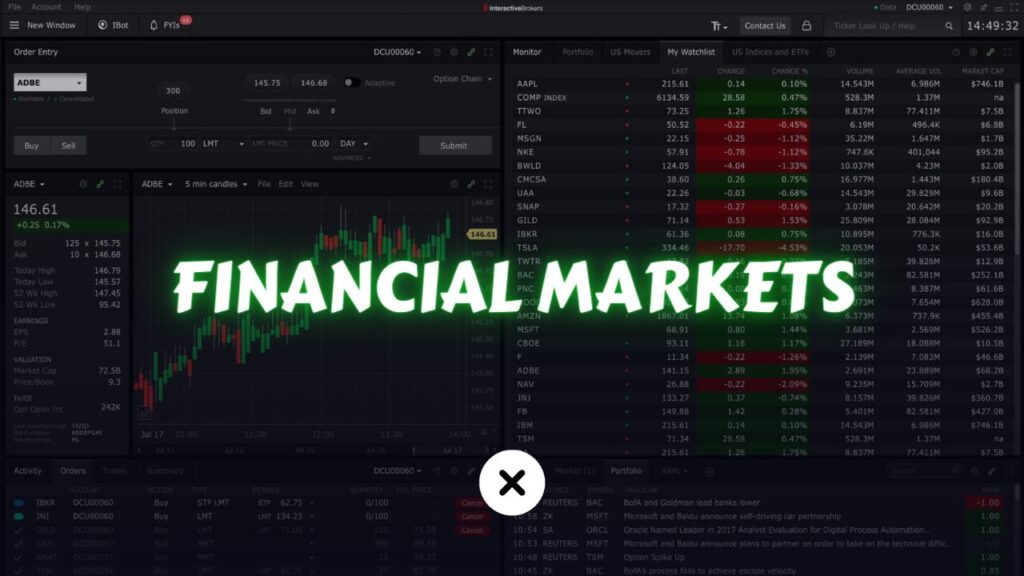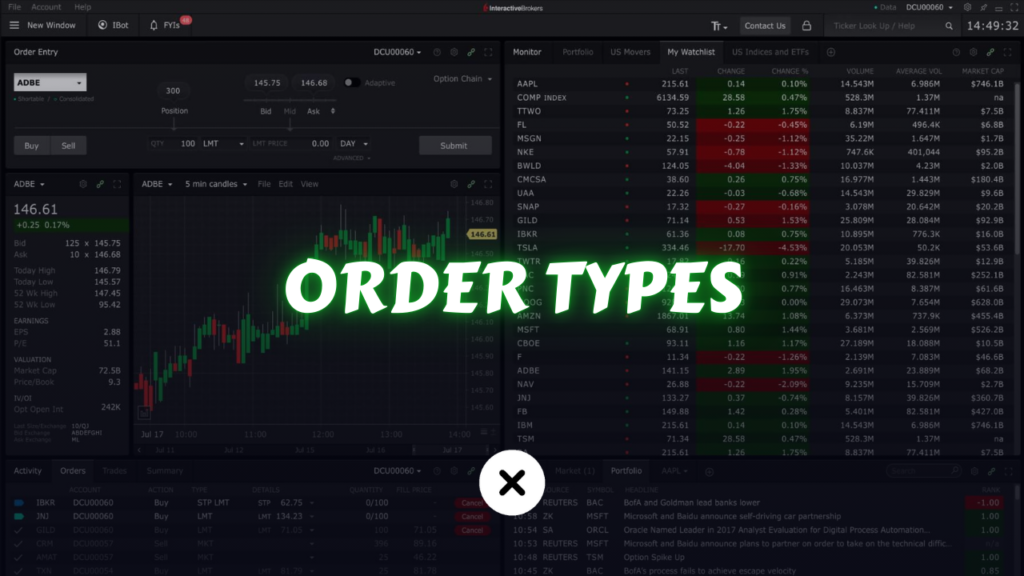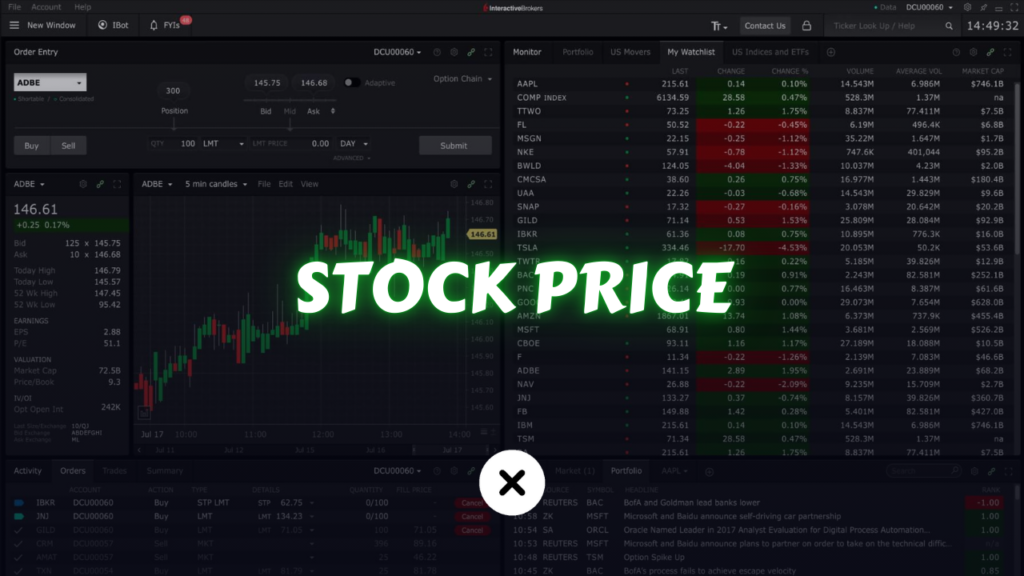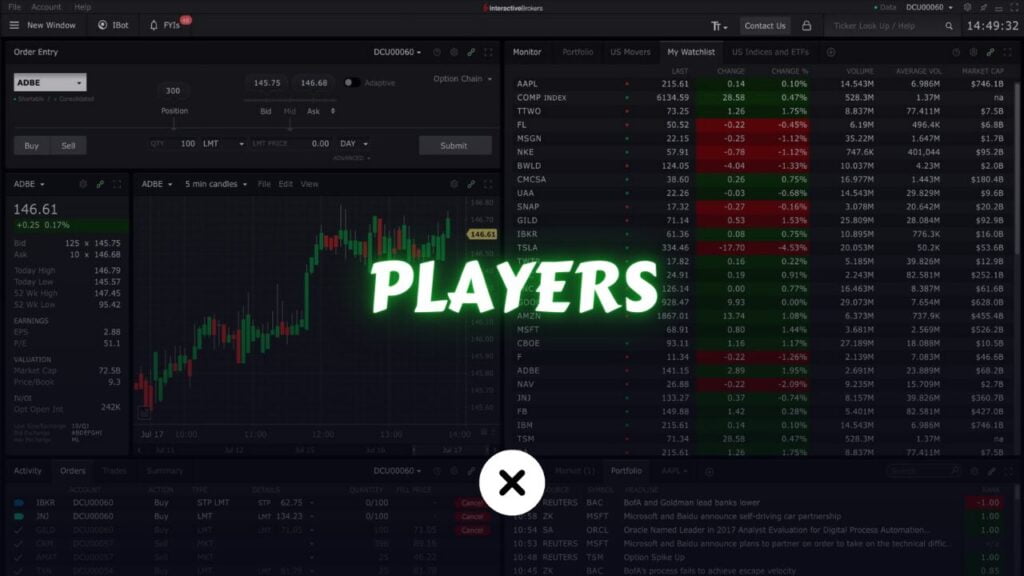Risk management is an indispensable pillar of successful stock trading, forming the blueprint that guides how you protect your capital while seeking profit opportunities. If you think of trading as traversing a rugged landscape, risk management is the map and safety gear that help you navigate treacherous terrain. Without it, even the most promising strategies can falter because every trade, no matter how well-researched, carries a degree of uncertainty.
In the stock market, uncertainty arises from countless factors: company earnings, global economic cycles, shifts in consumer demand, geopolitical events, and even sudden disasters. When you place a trade, you effectively take a stance on the future direction of a stock’s price. But what if the market moves against you? How do you ensure you don’t lose your entire investment? That’s where risk management becomes essential. It’s not merely about setting a simple stop-loss or glancing at volatility indexes. Rather, it is a holistic approach that covers everything from your initial research to your emotional mindset as you monitor open positions.
Throughout this guide, you will learn how to differentiate between systematic risk (the type that affects the entire market) and unsystematic risk (the type that targets specific companies or sectors). You will also explore fundamental risk management tools, including position sizing, stop-loss placements, and hedging. The discussion will extend to human psychology—often the trickiest part to control—and advanced methods like options, futures, and pair trading. By the end, you should be able to construct a risk management plan tailored to your needs, ensuring longevity in the trading world and empowering you to seize market opportunities with confidence.
Table of Contents
What Is Risk Management in Stock Trading?

Risk management in stock trading is the systematic process of identifying, assessing, and curtailing potential downsides in your trades or broader portfolio. It attempts to answer several key questions:
- Where might losses stem from?
- How large could these losses be if the worst-case scenario unfolds?
- Which tools or techniques can I use to limit, cushion, or offset these losses?
Crucially, risk management is not about completely avoiding risk, which is impossible in a market-based environment. Instead, it’s about taking calculated risks—risks that you have carefully weighed, measured, and determined to be acceptable given the potential returns. It’s analogous to driving: You can’t remove every hazard on the road, but you can wear a seatbelt, maintain your vehicle, and drive defensively to reduce the likelihood or impact of an accident.
In stock trading, the “seatbelts” might include setting a precise stop-loss, diversifying your portfolio across different industries, using position sizing rules that limit how much of your capital goes into any one trade, and employing hedges such as options to mitigate downside risk. The overarching aim is straightforward: Preserve capital, remain psychologically calm, and stay in the game long enough to let your edge or strategy work over time.
Why Risk Management Matters
Many newcomers to trading are attracted by stories of quick fortunes—someone out there bought a small tech stock at $5, and it soared to $100 within a year. While such spectacular gains do occur, they are the outliers, and focusing solely on them obscures the harsh reality of potential losses. Market volatility can wipe out a trader’s entire account if no safeguards are in place.
Risk management matters for several reasons:
- Capital Preservation
Your trading capital is like the engine of your car: If the engine dies, the journey ends. You can have the sharpest analytical tools, the keenest sense of market movements, and a robust strategy, but if you lose your capital too quickly, you no longer get to participate. Proper risk management ensures that even a string of losing trades won’t knock you out of the market. - Psychological Stability
Trading is a mentally challenging endeavor. If you experience massive drawdowns (sharp declines in your account value), you may become fearful or irrational. Emotionally driven decisions—revenge trading, panic selling, or refusing to exit a losing position—often compound the damage. Risk management practices, such as consistent stop-loss rules and moderate position sizes, help keep your stress levels in check. - Longevity Through Different Market Cycles
The markets don’t move in a straight line. They cycle through bullish periods, bearish collapses, and sideways consolidations. With robust risk management, you can survive all these cycles, learning and adapting as you go. Survival itself is an underrated advantage: Many times, simply enduring a difficult period positions you to benefit when conditions improve. - Consistency and Scalability
Beginner traders sometimes luck into a big win by taking irresponsible risks. However, replicating that approach consistently is nearly impossible. True success in trading is measured over many months or years. A steady, risk-conscious strategy is far more scalable and sustainable than a haphazard chase of high-risk trades. - Adaptable Framework
Risk management doesn’t just apply to day trading or short-term speculation. It’s equally relevant for investors with longer horizons. Having a structured approach—where you monitor systematic risks such as economic recessions and unsystematic risks like company mismanagement—means you can pivot as conditions evolve.
Ultimately, risk management is your armor against both the expected and the unexpected, preserving your emotional well-being and financial resources.
Systematic vs Unsystematic Risk

An often-overlooked distinction in risk management is the difference between systematic risk and unsystematic risk. Recognizing how each type operates—and learning how to mitigate them—is critical to preserving your trading capital in diverse market conditions.
Systematic Risk
Systematic risk is also known as “market risk” or “undiversifiable risk.” It arises from widespread factors that affect the entire market or a significant portion of it, such as:
- Economic Recessions and Booms: When GDP falls significantly, consumer spending decreases, companies earn less, and stock prices can decline across the board.
- Geopolitical Tensions: Wars, trade disputes, and diplomatic crises can jolt global markets, sending most stocks downward.
- Monetary Policy: Central bank decisions on interest rates and quantitative easing influence the cost of capital and can either inflate or deflate stock market valuations.
- Pandemics and Natural Disasters: As we saw in 2020 with COVID-19, systemic shocks can rapidly deflate an entire market.
Because systematic risk is tied to the broader economic or political environment, you can’t completely avoid it by picking individual stocks. Even stellar companies with strong financials may suffer if the overall market is in panic mode. However, asset allocation (spreading your investments across multiple asset classes such as bonds, real estate, gold, or even cash) can help cushion the blow. During a severe market downturn, a well-diversified portfolio is less likely to lose as much value as a portfolio composed entirely of high-volatility equities.
Unsystematic Risk
Whereas systematic risk impacts broad swaths of the market, unsystematic risk is “specific risk” tied to an individual company, sector, or industry. For example:
- Company-Specific Mismanagement: A CEO’s scandal, misallocation of corporate funds, or an unprofitable acquisition can tank the company’s stock.
- Competitive Shifts: A competitor introducing a superior product can undermine an incumbent’s market share, dragging its stock price down.
- Regulatory or Legal Issues: Lawsuits, patent disputes, or new regulations can sharply affect only one particular firm or a small group of firms.
Unsystematic risk is considered “diversifiable.” If you hold a basket of stocks across technology, healthcare, finance, consumer goods, and energy, a failure in one or two companies won’t decimate your entire portfolio. This approach is central to the idea of not putting all your eggs in one basket: By spreading out your investments, you minimize the impact of any one stock or sector collapsing.
Managing Systematic and Unsystematic Risk Together
A comprehensive risk management plan addresses both types of risk:
- Systematic Risk Mitigation:
- Global and Sector Allocation: Spreading money across bonds, real estate, commodities, and different global markets can reduce the impact of a crash in your home market.
- Hedging With Index Options/Futures: If you sense a broad market downturn, you can buy put options on major indexes or short futures to offset some of the losses in your equity holdings.
- Unsystematic Risk Mitigation:
- Diversification Within Stocks: Holding 10 to 20 well-researched positions across multiple sectors.
- Thorough Fundamental Analysis: Avoiding companies with shaky financials, unsustainable debt levels, or questionable leadership.
- Stop-Loss Orders: Placing protective orders for each position to exit if the stock plunges due to unexpected bad news.
When you apply these measures properly, you create multiple layers of defense. Even if a major recession hits and a few of your holdings suffer from specific internal issues, you’re unlikely to face catastrophic losses that eliminate your trading or investment capital.
Core Concepts of Risk Management

With the backdrop of systematic versus unsystematic risk in mind, let’s examine the foundational elements of risk management. These are your everyday tools—vital, consistently applied methods that protect your account from large drawdowns.
Risk Tolerance
Risk tolerance is the level of uncertainty or potential financial loss you can endure before it becomes psychologically or economically untenable. Every person’s risk tolerance is different, influenced by factors such as:
- Life Circumstances: Younger people with stable careers and many earning years ahead generally have a higher tolerance for market fluctuations. Retirees relying on their investment income might be more conservative.
- Personal Psychology: Some individuals naturally handle risk better, maintaining composure during market turbulence. Others are prone to stress, which can degrade decision-making.
- Financial Reserves: If you have substantial savings or multiple sources of income, you might be more comfortable risking a portion of your wealth in higher volatility trades.
Determining your risk tolerance isn’t merely an abstract exercise. It guides position sizing, stop-loss placements, and portfolio diversification. For instance, if you decide you can only stomach a 10% overall drawdown, your approach to each trade will reflect that. You won’t load up on highly leveraged positions or chase extremely volatile penny stocks.
Position Sizing
Position sizing deals with how much capital you commit to any single trade. This might sound straightforward—after all, you can always decide to buy 50 or 100 shares—but the mechanics can be deceptively complex. A popular rule is the 1–2% rule, where you risk only 1–2% of your total account on each trade. By doing so, even a streak of losing trades (which will happen eventually) does not completely drain your account.
Consider a $20,000 account with a 1% risk rule. You are willing to lose $200 maximum on any single trade. If a stock is trading at $50 and your stop-loss is set at $47 (a $3 risk per share), you can safely buy about 66 shares ($200 / $3 ≈ 66 shares). If the stop-loss hits, you’re down $198 plus commission—painful, but not devastating.
Position sizing isn’t just about controlling absolute losses, though. It also plays into psychological comfort—knowing that no single trade can massively set you back reduces the emotional burden of trading, helping you stay disciplined.
Risk-Reward Ratio
The risk-reward ratio is the relationship between how much you stand to lose if a trade goes wrong versus how much you might gain if it goes right. Many successful traders aim for a risk-reward ratio of at least 1:2 or 1:3, meaning they seek trades where the potential profit (reward) is two or three times the amount they’re risking. This way, even if you only win half of your trades, the winners outsize the losers and you still end up profitable.
For instance, if you buy a stock at $50, set a stop-loss at $48 (risking $2 per share), and target a profit of $54 (a $4 gain per share), your risk-reward ratio is 1:2. If you manage your exits properly, you can be wrong 50% of the time and potentially still break even or even turn a profit over the long run.
Diversification
Diversification is a strategy of spreading your funds across multiple assets to reduce unsystematic risk. Say you concentrate 90% of your portfolio in one software company. If new technology renders its flagship product obsolete, you could suffer staggering losses. But if you hold 15 different companies in various industries, a single company’s downfall is less likely to jeopardize your entire portfolio.
The essence of diversification goes beyond just owning different stocks. You can also diversify across:
- Market Caps: Large-cap, mid-cap, small-cap stocks.
- Geographies: Domestic markets and international or emerging markets.
- Asset Classes: Stocks, bonds, commodities, and real estate.
While diversification can’t fully insulate you from systematic risk (a global recession can bring down most equities), it markedly reduces the impact of any one catastrophic event.
Leverage and Margin
Leverage involves borrowing money—often through a margin account—to buy more shares than you could otherwise afford. While leverage magnifies profits when trades move in your favor, it likewise magnifies losses. A 2-to-1 margin means that if you have $10,000, you can control $20,000 worth of stock. Even a 5% adverse move in that leveraged position can cause a 10% loss on your initial capital.
Beginners should approach margin with caution. If you are still fine-tuning your strategy and honing your risk management skills, excessive leverage can quickly wipe out your account. Once you master the basics of position sizing, stop-loss placement, and emotional discipline, you can consider moderate leverage as a tool for increasing returns.
Stop-Loss Orders
A stop-loss order is an order you set with your broker to automatically exit a position if the price hits a predetermined level. This ensures you don’t watch helplessly as losses pile up. Whether you prefer a hard stop-loss (a fixed exit price) or a trailing stop-loss (which adjusts upward as the stock price moves in your favor), the stop-loss is your fail-safe against catastrophic declines.
Example: Suppose you buy 200 shares of a stock at $30, and you set a stop-loss at $28, risking $2 per share. If the price unexpectedly tumbles to $28, your stop-loss triggers an automatic sell order, potentially saving you from further drops. Although stop-loss orders can sometimes trigger prematurely due to intraday volatility (“stop-running”), having them in place is generally far preferable to leaving your trades wholly unguarded.
Hedging Strategies
Hedging is about taking an offsetting or protective position to reduce the potential impact of adverse price moves. You can hedge an individual stock position (for example, by buying protective put options) or hedge an entire portfolio (for example, by shorting a broad market ETF or purchasing index put options). While hedging involves costs (such as option premiums) and can dilute some potential gains, it serves as insurance when markets plunge.
Psychology and Emotion Management

In many ways, risk management is straightforward: define a stop-loss, size your position, diversify, and so forth. The harder part often lies in maintaining the emotional fortitude to follow these rules consistently. Human psychology can sabotage even the best plan if not managed carefully.
Fear, Greed, and Hope: These three emotions frequently arise in trading:
- Fear can cause you to exit good trades too soon or avoid placing trades entirely.
- Greed can make you stay in a winning trade too long, refusing to lock in profits, or take an oversized position driven by the desire for a huge payoff.
- Hope might tempt you to hold onto losing positions “just in case” they recover, deviating from your stop-loss strategy.
Techniques to Control Emotions:
- Strict Trading Plan: Define entry and exit rules before you open a position. Making decisions during the trade, when money is at stake, is emotionally taxing.
- Checklists: A short, bulleted checklist that you consult each time you enter or exit can significantly cut down on impulsive moves.
- Trading Journal: Record every single trade, including your thoughts and emotions. Review them periodically to spot recurring mistakes—did you deviate from your stop-loss out of fear or greed?
- Mindfulness and Breaks: If you feel overwhelmed, step away from your screen. Emotional resets can prevent a single moment of panic from derailing your entire account.
In the end, the market doesn’t care how you feel. To succeed, you must rein in emotional impulses and execute your strategy objectively. Mastery of self is often the hidden cornerstone of consistent profitability.
Assessing and Measuring Risk

Risk assessment is integral to deciding whether a trade offers an acceptable balance of potential reward relative to potential loss. While you can rely on your gut, data-driven approaches tend to yield more reliable outcomes.
Fundamental Analysis
Fundamental analysis looks “under the hood” of a company, evaluating its financial statements, earnings potential, competitive position, and broader industry dynamics. By examining metrics such as Earnings per Share (EPS), Debt-to-Equity Ratio, Return on Equity, and Cash Flow, you gauge whether a company’s stock is overvalued or undervalued relative to its peers.
For risk management, fundamental analysis helps you:
- Avoid overhyped companies lacking real revenue or profitability.
- Identify more stable businesses that may be resilient in a downturn (like consumer staples or utility companies).
Sound fundamental research reduces unsystematic risk by nudging you toward higher-quality stocks with robust balance sheets.
Technical Analysis
Where fundamental analysis answers what to buy, technical analysis helps you decide when to buy (and sell). By studying price action, chart patterns, volume, and indicators like Moving Averages, Relative Strength Index (RSI), and Bollinger Bands, you attempt to anticipate short- to medium-term price movements.
From a risk management perspective, technical analysis is valuable for:
- Identifying Entry Points where the risk of a reversal is deemed lower.
- Locating Support Levels to place stop-losses.
- Estimating Volatility to decide if a stock’s price swings are too large for your risk tolerance.
A common technique is to buy a stock near a recognized support level, where the price historically bounces upward. This way, your stop-loss can be relatively tight underneath that support, optimizing your risk-reward ratio.
Volatility Indicators
Volatility measures how rapidly a stock or index’s price moves. Higher volatility implies greater uncertainty, and thus a higher risk of large swings (both up and down).
- Average True Range (ATR) quantifies the average daily range over a specified period. This helps you set more informed stop-losses. If a stock’s ATR is $1, placing a stop-loss only $0.20 away from the current price might be too tight.
- VIX (Volatility Index) for the S&P 500 signals broader market sentiment. A rising VIX often correlates with growing investor fear and potential sell-offs.
When volatility is very high, you might reduce your position size or step aside from trading until conditions stabilize. Conversely, in low-volatility environments, you might risk a bit more since large, sudden drops are less common (though never impossible).
Market Sentiment
Market sentiment captures the collective psychology of market participants—whether they feel bullish, bearish, or neutral. Sometimes sentiment can override fundamentals or technicals in the short run. If investors are euphoric, prices can spike beyond what rational valuations suggest. If fear dominates, stocks can plummet to undervalued levels.
Tools to measure sentiment:
- Put-Call Ratio: A high ratio often indicates bearish sentiment, while a low ratio suggests bullishness.
- News Headlines and Social Media: Negative headlines can spark sell-offs, while hype around a particular stock can inflate its value quickly.
- Investor Surveys (e.g., the AAII sentiment survey): These gauge how individual investors feel about the near-term market outlook.
Balancing sentiment analysis with fundamental and technical perspectives offers a multi-dimensional view of risk. You might discover that the fundamentals and technicals look great, but if euphoria is sky-high, the risk of a sudden correction might be higher than it appears.
Advanced Risk Management Techniques

Once you have mastered position sizing, stop-losses, and basic diversification, you may explore more advanced methods. These techniques often suit traders with larger accounts or those who wish to fine-tune their exposures.
Trailing Stop-Loss
A trailing stop-loss moves up (for a long position) as the stock price moves in your favor, effectively “locking in” gains. Suppose you purchase a stock at $50 and set a 5% trailing stop. If the stock rises to $60, your stop-loss moves from $47.50 (5% below $50) to $57 (5% below $60). If the stock then drops to $57, your broker automatically sells the position, netting you a $7 gain per share.
Trailing stops allow you to stay in winning trades longer while still protecting accumulated gains, minimizing the psychological challenge of determining exactly when to exit.
Position Hedging With Options
Options provide flexibility to hedge individual positions or an entire portfolio. For example:
- Protective Put: You own 100 shares of a company at $50 each. You purchase a put option with a strike price of $50. If the stock drops below $50, the put increases in value, offsetting the loss in your shares.
- Covered Call: You own 100 shares and sell a call option against them, earning a premium. If the stock rises above the strike price, you may have to sell your shares at that strike price, limiting your gains but offsetting some losses if the stock stagnates or falls modestly.
Hedging with options requires understanding time decay, implied volatility, and pricing models, but it can be an excellent insurance policy, especially during earnings announcements or uncertain economic events.
Risk Mitigation With Futures
Futures contracts oblige the buyer (or seller) to purchase (or sell) a specific asset at a predetermined date and price. Large institutional traders commonly use futures to hedge against broad market movements. For instance, if you hold a significant equity portfolio, you might short S&P 500 futures to hedge against a market-wide downturn. If the market does decline, losses in your stocks can be offset by gains in your short futures position.
Because futures are highly leveraged, even small price movements can generate large gains or losses. Hence, they require a sophisticated understanding of margin requirements, contract specifications, and market dynamics.
Pair Trading
Pair trading involves going long on one stock (or sector) while shorting another, typically within the same industry. The premise is to benefit from the relative performance rather than the absolute direction of the market. If Stock A in the tech sector is undervalued and Stock B is overvalued, you go long A and short B. Even if the entire tech sector declines, you may profit if A outperforms B or declines less. Pair trading can reduce systematic risk by neutralizing your exposure to broad market swings, but it hinges on accurate relative-value assessments.
Creating a Risk Management Plan

A robust risk management plan is not a one-size-fits-all template but rather a personalized set of guidelines. Think of it as your personal “trading constitution”: a written document stating how you will react under various conditions.
Defining Goals and Objectives
First, be crystal clear about what you want to achieve with trading:
- Is your goal to generate consistent monthly income for living expenses?
- Are you aiming to grow your capital over years or decades for retirement?
- Are you comfortable with occasional large gains and losses if it means higher potential returns overall?
Your risk management plan should reflect these goals. Someone who needs short-term stability may not want to risk 10% of their account on a volatile biotech stock. Conversely, a younger professional with a high-risk tolerance and a secure income might allocate a portion of their portfolio to more speculative trades.
Choosing a Trading Strategy
Your strategy dictates how you will attempt to profit from market movements. Common approaches include:
- Swing Trading: Holding positions for days to a few weeks, focusing on short- and medium-term price trends.
- Position Trading: Holding for weeks to months, aiming to catch the majority of a trend.
- Long-Term Investing: Holding for years, betting on the fundamental growth of companies.
- Day Trading: Intraday entries and exits, with no positions held overnight.
Each approach inherently carries different levels of risk, which must align with your personal tolerance and schedule.
Setting Clear Rules and Guidelines
Your plan should specify:
- Entry and Exit Rules: Which technical or fundamental signals must align before you place a trade? Under what conditions do you exit?
- Stop-Loss Policies: How will you determine the price level for your stop-loss (support levels, ATR multiples, or percentage thresholds)?
- Position Sizing Methods: Will you apply the 1–2% rule strictly? Do you adjust it based on market volatility?
- Diversification Parameters: Maximum allowed exposure to one sector or asset class; maximum permitted correlation among holdings.
- Use of Leverage: Will you use margin, and if so, under which conditions?
Putting all these details in writing prevents impulsive decisions when the markets turn choppy or when you’re tempted to chase a “hot tip” on social media.
Using Checklists and Journals
A consistent routine encourages disciplined execution:
- Pre-Trade Checklist: Ensures each trade meets all your criteria before you commit capital.
- Post-Trade Journal: Logging details—such as date, entry price, exit price, profit/loss, and emotional state—creates a record you can analyze. Over time, patterns emerge: maybe you repeatedly lose on breakout trades but excel in pullback entries.
By reviewing your journal, you can identify flaws in your approach (e.g., ignoring your stop-loss rules) and strengths to double down on (e.g., successful trading around earnings reports).
Practical Examples and Case Studies
Reading about risk management concepts can only take you so far; seeing them applied concretely helps solidify the lessons.
Example: Navigating a Small Account With Position Sizing
Imagine you have a $3,000 trading account and want to risk no more than 2% ($60) on any trade. You spot a $20 stock that you believe is undervalued, but you recognize a support level at $18. You decide to place your stop-loss at $18, risking $2 per share.
- Maximum risk: $60 total
- Risk per share: $2
- Position size: $60 ÷ $2 = 30 shares
Thus, you invest $600 in this trade (30 shares × $20). If you’re stopped out, you lose $60, which is only 2% of your overall account.
Example: Hedging a Medium-Size Portfolio
Suppose you have $50,000 in a portfolio spread across tech, healthcare, and consumer staples. You fear a short-term market downturn due to a Federal Reserve announcement. Rather than selling all your holdings, you buy put options on a major stock index, effectively hedging some of your downside. If the market slides, the puts gain value, offsetting at least part of the losses in your long positions.
Example: Trading Emotions
Consider a scenario in which you buy 100 shares of a fashionable tech stock at $100, anticipating a new product release. Before the announcement, negative rumors surface. The stock plunges to $90 in a single session. You panic but also feel hope that the product launch might reverse the drop. According to your trading plan, however, you had set a hard stop-loss at $95 to limit risk. The plan instructs you to exit once that level breaks.
Emotionally, you want to cling to the position, hoping for a rebound. Rationally, your plan says to exit at $95. If you ignore your plan and hold, the stock might slide further to $80, doubling your losses. This example illustrates why trading psychology can overshadow even the best technical or fundamental insights.
Common Mistakes to Avoid

Even if you understand these concepts, a few common errors can undermine your efforts:
- Over-Leveraging
Amplifying positions with margin beyond your risk tolerance can lead to catastrophic drawdowns in volatile periods. - Ignoring Stop-Losses
Placing a stop-loss but repeatedly moving it lower when the market dips removes its entire purpose. - Concentration in One Idea
Betting the farm on a single stock or sector can be devastating if your thesis is wrong. - Failing to Adapt
Markets evolve. Strategies that worked in a bullish environment may flounder in a choppy, sideways market. You must adjust your risk parameters accordingly. - Emotional Trading
Making decisions based on euphoria or fear typically leads to ill-timed entries/exits. A structured plan helps you remain objective. - Not Reviewing Performance
If you don’t keep a journal or analyze your trades, you can’t learn from mistakes. This hampers long-term growth and improvement.
Avoiding these traps ensures you stay aligned with your plan. Even if markets don’t move in your favor, your controlled approach means you live to trade another day.
Conclusion
Risk management in stock trading is more than a collection of tips; it is a holistic framework ensuring that no single adverse move, emotional impulse, or unforeseen event can wreck your financial well-being. It starts with understanding the nature of systematic risk (the macro-level, unavoidable forces) and unsystematic risk (the specific vulnerabilities of a single stock, sector, or industry). Armed with that insight, you can strategically employ position sizing, diversify your holdings, place well-thought-out stop-losses, and even hedge if necessary.
While the technicalities—calculating ATR, analyzing fundamentals, or monitoring sentiment—are crucial, the psychological dimension is often the deciding factor. Proper risk management creates a safety net, allowing you to maintain emotional equanimity. When you’re not paralyzed by fear or swayed by euphoria, you can better follow your trading plan. Over time, a disciplined approach that consistently limits losses and fosters a healthy risk-reward balance often outperforms the flashy, high-risk strategies that might score occasional windfalls but risk blowing up an account in a single disastrous trade.
Developing your personal risk management plan is a continual process. You’ll likely refine your rules as you gain market experience, adapt to new economic cycles, or discover which strategies fit your temperament best. Regardless of how you evolve as a trader, the underlying principles of risk management remain steadfast. Protecting your capital, controlling emotions, and staying alert to both systematic and unsystematic risks are the enduring fundamentals that separate short-lived speculators from long-term market participants.
Final Word: Always remember that the hallmark of a seasoned trader or investor isn’t the ability to avoid losses entirely—that’s impossible. Instead, it is the capacity to keep losses small and manageable, thereby preserving capital to capitalize on the next profitable opportunity. By embracing the concepts laid out in this guide—from the difference between systematic and unsystematic risk to the nuanced psychology of trading—you’ll be far better prepared to navigate the ups and downs of the stock market with resilience and confidence.
Frequently Asked Questions (FAQ)
1. What is the purpose of risk management in stock trading?
Risk management aims to protect your trading capital by minimizing potential losses while allowing for consistent growth. It helps traders make disciplined decisions, reduce emotional interference, and stay in the market long enough to benefit from profitable opportunities.
2. What is the difference between systematic and unsystematic risk?
- Systematic Risk: Affects the entire market or a broad sector due to macroeconomic factors like recessions, inflation, or geopolitical events. It cannot be eliminated through diversification but can be mitigated through asset allocation or hedging.
- Unsystematic Risk: Specific to a company or industry, such as poor management, legal issues, or competitive disadvantages. It can be reduced by diversifying your portfolio across multiple stocks and sectors.
3. How can I calculate my position size?
To calculate your position size, determine how much of your account you’re willing to risk on a trade (e.g., 1–2%). Divide this amount by the difference between your entry price and stop-loss price. For example:
- Account size: $10,000
- Risk per trade: 1% ($100)
- Entry price: $50, Stop-loss price: $45 (risk $5 per share)
- Position size: $100 ÷ $5 = 20 shares
4. What is a stop-loss order, and why is it important?
A stop-loss order is a pre-set instruction to automatically sell a stock if its price falls to a specified level. It limits your losses by ensuring you exit a losing position before it becomes catastrophic. For example, if you buy a stock at $100 and set a stop-loss at $95, your maximum loss per share is $5.
5. How does diversification help in managing risk?
Diversification reduces unsystematic risk by spreading your investments across multiple stocks, industries, or asset classes. If one stock or sector underperforms, gains in other areas of your portfolio can offset the losses. For example, combining tech stocks with consumer staples or healthcare companies creates a more balanced portfolio.
6. What is the ideal risk-reward ratio for trades?
Many traders aim for a risk-reward ratio of at least 1:2, meaning they risk $1 for every $2 in potential profit. This ensures that even with a lower win rate, profitable trades can outweigh losses over time.
7. Can I eliminate all risks in stock trading?
No, risk is inherent in stock trading. While systematic risks like recessions affect the entire market and cannot be eliminated, you can minimize them through asset allocation. Unsystematic risks, such as company-specific issues, can be significantly reduced through diversification and proper research.
8. What role does psychology play in risk management?
Psychology is crucial in executing risk management effectively. Emotions like fear, greed, or hope can lead to impulsive decisions, such as moving stop-losses, over-leveraging, or revenge trading. A well-structured plan and disciplined mindset help mitigate emotional interference.
9. Should beginners use leverage or margin?
Beginners should approach leverage with caution, as it amplifies both gains and losses. It’s better to first develop strong risk management skills—like position sizing, stop-loss placement, and diversification—before considering margin trading.
10. How often should I review my risk management plan?
Regularly. Your risk management plan should be reviewed at least quarterly or whenever market conditions change significantly. Revisiting the plan helps ensure it aligns with your trading goals, current market trends, and personal circumstances.
